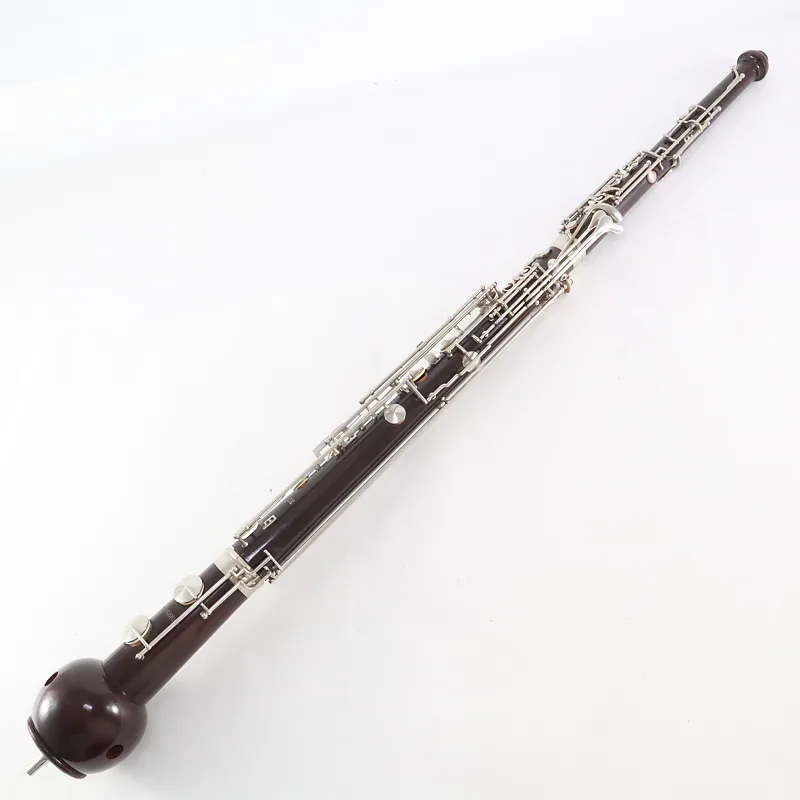Heckel clarina
Woodwinds
Europe
Between 1001 and 1900 AD
Video
The Heckel-clarina, also known simply as the clarina or patent clarina, is a rare woodwind instrument that combines features of both the oboe and the clarinet. It is a rare woodwind instrument that combines features of both the oboe and the clarinet.
Instrument Characteristics
The Heckel-clarina is a single-reed, conical-bore instrument made of metal, resembling a soprano saxophone. It has the fingering system of the oboe and utilizes a clarinet-type single-reed mouthpiece.
There are two versions of the Heckel-clarina: Sopranino in E-flat and Soprano in B-flat.
Sound and Range: According to promotional materials, the tone of the Heckel-clarina resembles that of a cor anglais (English horn) in its lower register, a saxophone in the middle range, and a clarinet in its upper range. This unique combination allows it to produce a versatile sound suitable for various musical contexts.
The history of Heckel revolves around the development of woodwind instruments by the Heckel family, particularly focusing on the contributions of Wilhelm Heckel and his predecessors.
Founding and Early Years
Johann Adam Heckel: The company was founded by Johann Adam Heckel in 1831 in Biebrich, Germany, in partnership with Carl Almenräder. They specialized in making bassoons, which quickly gained a reputation for their quality.
Expansion: After Almenräder’s retirement, Johann Adam continued to lead the company and expanded its offerings to include various woodwind instruments such as oboes, clarinets, and English horns.
Wilhelm Heckel’s Contributions
Wilhelm Heckel born on January 25, 1856, Wilhelm took over the family business after his father died in 1877. He made significant improvements to the design and acoustics of woodwind instruments. Wilhelm developed a new contrabassoon that impressed composer Richard Wagner, leading to the creation of the Heckelphone, an instrument still produced today. He also worked on improving the sound quality of existing instruments.
Instrument Production
Throughout its history, Heckel has produced a wide range of woodwind instruments, including:
- Bassoons
- Contrabassoons
- Heckelphones
- Clarinets
- Oboes
- Piccolo heckelphones
- Heckel-clarinas
Legacy and Modern Era
The company remains family-owned and has continued to innovate in woodwind instrument manufacturing. Wilhelm’s descendants have maintained the tradition of high-quality craftsmanship. Heckel instruments are known for their exceptional quality and have been used by musicians worldwide. The company has played a significant role in shaping modern woodwind instrument design. Today, Wilhelm Heckel GmbH continues to produce a variety of woodwind instruments, upholding its legacy as one of the oldest and most respected manufacturers in the field.
Design Features
The Heckel-Clarina is made entirely from metal and has a conical shape resembling that of a soprano saxophone. Its fingering system is identical to that of the oboe, allowing for ease of play for musicians familiar with woodwind instruments. A notable feature of the Heckel-Clarina is its ability to produce a “triple sound.”
In its lower register, it resembles the sound of an English horn; in the middle register, it takes on qualities similar to those of a saxophone; and in the upper register, it resembles a clarinet.
FAQ
What are the characteristics of a heckel-clarina musical instrument?
The heckel-clarina is a wind instrument with a double-reed mouthpiece, similar to the oboe, but typically larger and tuned lower. It has a rich, mellow sound and is primarily used in orchestras for its unique tonal quality. It features a distinctive shape, with a curved body and keys that allow for chromatic playing. It is often made of wood and can vary in size.
What is the origin of the heckel-clarina?
The heckel-clarina originated in Germany in the 19th century, developed by the Heckel family, who are well-known for their contributions to woodwind instruments. It was designed to fill a niche between the oboe and bassoon, offering a deeper tone than the oboe but higher range than the bassoon. It became a specialized instrument used in orchestral music.
What are the types of heckel-clarina available?
There are several types of heckel-clarina, including the standard soprano and bass versions. The soprano model has a higher pitch range, while the bass model is tuned lower and produces a deeper sound. There are also variations in key configurations and materials, with some models designed specifically for solo performances and others for orchestral use.
 Links
Links
References
Other Instrument
Categories


















